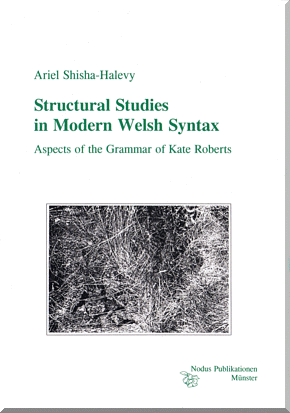 Shisha-Halevy, Ariel: 978-3-89323-612-1
Shisha-Halevy, Ariel: 978-3-89323-612-1•••» Autorenverzeichnis
 Shisha-Halevy, Ariel: 978-3-89323-612-1
Shisha-Halevy, Ariel: 978-3-89323-612-1 |
•••» Autorenverzeichnis |

|
Introduction: Statement of Aims and Method /
Some Grammemic Functions of gwneud in Literary Modern Welsh
– Verb-clause and verb-clause-constituent constituent focussing –
Gwneud an analytical factitive/causative verb-form (our
construction III) – Gwneud pro-verb – Appendix:
Déanamh-periphrasis in literary Modern Irish: some
classified examples / Modern Welsh un: A Structural Sketch
of Syntax – Pro-form un – Non-pro-form un –
Non-grammemic un – Grammemic yr un- not pro-form,
not definite quantifier – Appendix: Modern Irish aon,
Middle Welsh un, Modern Welsh un: some contrastive
gleanings / Nominal Predication in Literary Modern Welsh: A
Typology of ‘Nominal Sentence’ Patterns – Theoretical Prolegomena
– The delocutive patterns – The copular pattern: #Theme – Copula –
Rheme# – The interlocutive pattern: #Rheme – interlocutive Theme#
– The binominal pattern set – Deictic-existential presentative
statement: #dyna/dyma (presenter) – (pro-)noun
(presentate)# – Appendix I: Nominal Sentences and
yn-rhemes – some observations – Appendix II: The Modern
Irish Nominal Sentence and Cleft Sentence (Contrastive notes
corpus-based commented typology; Corpus-based commented typology;
Documentation) / A Defining Glossary of Special Terms /
Bibliographical References / Selective Index of Subjects, Concepts
and Elements Discussed
| ||||||